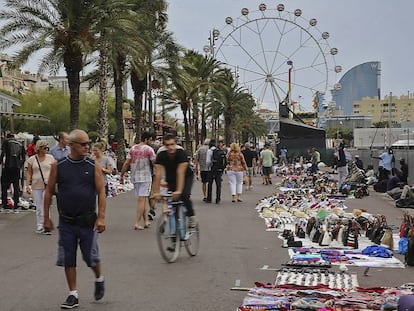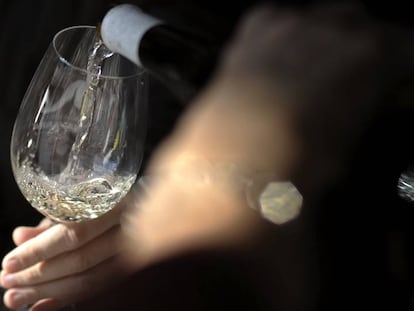Fakes and piracy are costing Spanish companies €6.8 billion a year
According to a new report, sectors such as fashion, pharmaceuticals and cosmetics in Spain are losing more than 10% of turnover to counterfeiting


Counterfeit goods and pirated audiovisual content are costing European companies in sectors vulnerable to intellectual property infringement almost €56 billion a year – or an average of 7% of sales. In Spain, however, the €6.766 billion loss is the equivalent to 10.6% of sales, according to a report from the European Union Intellectual Property Office (EUIPO).
The EUIPO estimates that the indirect impact of the counterfeiting industry is more than €92 billion
In the report, which has been seen by EL PAÍS, the EUIPO has updated the effects of piracy and counterfeit goods on the big corporations, focusing on 11 sectors that make intensive use of intellectual property rights linked to patents, designs or brands. These sectors – which include cosmetics and personal care; clothing, footwear and accessories; sports goods; and pharmaceuticals – represent 42% of Europe’s GDP, equivalent to €5.7 billion and 28% of jobs. On top of this, they produce a trade surplus of €96 billion while employees in these sectors earn 46% more than those in sectors that are not as dependent on intellectual property rights.
However, the economic fortune of companies in these sectors is being threatened by piracy and counterfeit goods. According to the latest EUIPO data, the global trade in fake goods rose to €452.9 billion in 2016, representing 3.3% of world trade. In the previous report, based on data from 2013, the figure was €338 billion, or 2.5%.
According to the EUIPO, the sale for counterfeit products does not equate to direct losses in the authentic market, which is why researchers have looked at other indicators (studies on the sale of counterfeit products, perception of corruption, for example) to calculate the cost to the aforementioned sectors, such as loss of sales, jobs and tax. Consequently, the EUIPO concludes that the direct impact of infringing intellectual property rights is more like €56 billion a year for the aforementioned sectors – the equivalent of 7.4% of sales.
Counterfeiting costs European companies in 11 sectors €56 billion a year
The sector most affected by counterfeit products is the fashion and accessories industry, with losses in Europe rising to €28.4 billion, or 9.4% of total turnover. Pharmaceuticals is the next hardest-hit with €9.6 billion in losses (3.9%), followed by cosmetics with €7 billion in losses (10.5%). Counterfeit wines and spirits cost companies 5.9% of their business or €2.4 billion.
In Spain, the cost of counterfeiting to companies has risen to €6.8 billion a year – the equivalent of 10.6% of sales. Indeed, the impact on sales is worse in Spain than the EU average in several sectors, such as fashion (14.9% of sales compared to 9.4%), pharmaceuticals (4.5% compared to 3.9%), wines and spirits (8.3% compared to 5.9%) and smartphones (10% compared to 8.3%).
Fake products also translate to 468,000 job losses and their corresponding tax revenue, which leads to a further loss of €16 billion a year between EU member states. In fact, the EUIPO estimates that the indirect economic impact of the counterfeiting industry is more than €92 billion.
English version by Heather Galloway.
Tu suscripción se está usando en otro dispositivo
¿Quieres añadir otro usuario a tu suscripción?
Si continúas leyendo en este dispositivo, no se podrá leer en el otro.
FlechaTu suscripción se está usando en otro dispositivo y solo puedes acceder a EL PAÍS desde un dispositivo a la vez.
Si quieres compartir tu cuenta, cambia tu suscripción a la modalidad Premium, así podrás añadir otro usuario. Cada uno accederá con su propia cuenta de email, lo que os permitirá personalizar vuestra experiencia en EL PAÍS.
¿Tienes una suscripción de empresa? Accede aquí para contratar más cuentas.
En el caso de no saber quién está usando tu cuenta, te recomendamos cambiar tu contraseña aquí.
Si decides continuar compartiendo tu cuenta, este mensaje se mostrará en tu dispositivo y en el de la otra persona que está usando tu cuenta de forma indefinida, afectando a tu experiencia de lectura. Puedes consultar aquí los términos y condiciones de la suscripción digital.










































